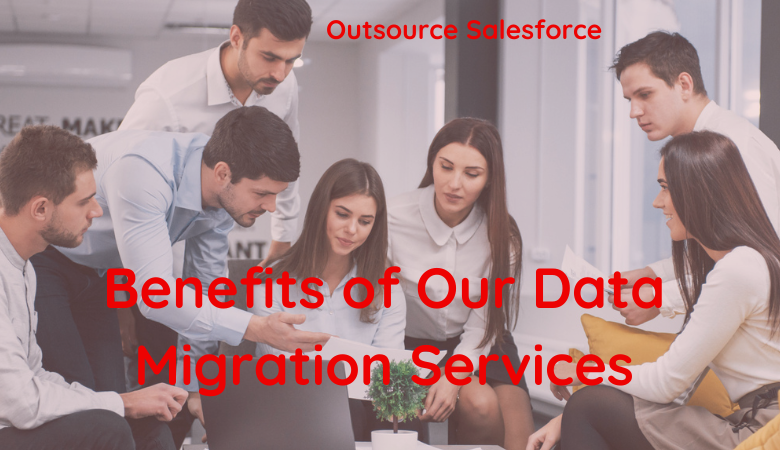How to work salesforce data migration

Salesforce is a popular customer relationship management (CRM) platform that enables businesses to manage their sales, marketing, and customer service activities. As businesses grow and evolve, they often need to migrate their data from one Salesforce instance to another, or from a different CRM platform to Salesforce. Salesforce data migration can be a complex and challenging process, but with the right approach and tools, businesses can successfully migrate their data and ensure a smooth transition to their new Salesforce environment.
In this article, we will explore the key aspects of Salesforce data migration services, including the challenges businesses face, the tools available for data migration, and best practices for ensuring a successful migration.
Benefits of Our Data Migration Services
- Import large volume of data from one CRM to another
- Enhance Speed and Performance
- Seamless data transition without disrupting your business operations
- Reduced redundancy and Data Storage Costs
- All-round support from migration to proper maintenance
What are the prerequisites of Salesforce Data Migration?
Before starting with Data migration, it is essential to know the data. Then perform an audit on source data. And lastly, Clean Up the data before importing them into a new system.
Challenges of Salesforce Data Migration
Salesforce data migration can present several challenges for businesses, including:
- Data Quality: The quality of the data being migrate is critical to the success of the migration. Poor data quality, such as missing or incomplete data, can cause issues with the migration process and result in inaccurate or incomplete data in the new Salesforce instance.
- Data Volume: The amount of data being migrated can also be a challenge, particularly for businesses with large amounts of data. Migrating large volumes of data can take a long time, impact system performance, and increase the risk of errors or data loss.
- Data Mapping: Mapping data from one system to another can be a complex process that requires a deep understanding of the data structure and relationships between different data elements. If data mapping is not done correctly, it can result in data errors or inconsistencies in the new Salesforce instance.
- Customizations: Customizations made to the source system, such as custom fields, objects, or workflows, may not be directly transferable to the new Salesforce instance. Businesses need to carefully evaluate their customizations and determine how to migrate them to the new environment.
- Data Security: Data security is always a concern during data migration, particularly if sensitive data is being migrated. Businesses need to ensure that their data is securely transferred to the new Salesforce instance and that appropriate security measures are in place to protect the data once it has been migrated.
Tools for Salesforce Data Migration
There are several tools available for Salesforce data migration, including:
- Salesforce Data Loader: Salesforce Data Loader is a free tool provided by Salesforce that allows businesses to import, export, and delete large volumes of data in Salesforce. It supports CSV files, as well as XML files for more complex data structures.
- Salesforce Migration Tool: The Salesforce Migration Tool is a command-line tool that enables businesses to deploy metadata and data to Salesforce environments. It supports XML files for data migration and provides more control over the migration process than the Salesforce Data Loader.
- Third-Party Tools: There are several third-party data migration tools available that provide additional functionality and features beyond what is offere by Salesforce Data Loader and the Salesforce Migration Tool. These tools can help simplify the migration process and improve the accuracy of the migrated data.
Best Practices for Salesforce Data Migration
To ensure a successful Salesforce data migration, businesses should follow these best practices:
- Develop a Data Migration Plan: Before starting the migration process, businesses should develop a comprehensive data migration plan that includes a detailed project timeline, data mapping and transformation rules, and a plan for testing the migrated data.
- Evaluate Data Quality: Businesses should evaluate the quality of their data before migrating it to the new Salesforce instance. This can include cleaning up data, removing duplicates, and ensuring that data is complete and accurate.
- Perform a Test Migration: Businesses should perform a test migration of a subset of their data to ensure that the migration process works as expected and that the migrated data is accurate and complete.
- Use the Right Tools: Businesses should use the right data migration tool for their specific needs. This can include using third-party tools for more complex data migrations or using
In Conclusion
Salesforce migration services offer numerous benefits to organizations looking to optimize their business processes and enhance their customer relationships. By migrating to Salesforce, organizations can enjoy increased efficiency, improved data management, and enhanced customer engagement.
One of the most significant advantages of Salesforce migration services is the ability to centralize data and streamline business processes. This helps organizations to eliminate silos and optimize their workflows, resulting in increased productivity and reduced costs. Salesforce also provides robust reporting and analytics tools that enable organizations to gain deep insights into their operations, allowing them to make informed decisions that drive growth and success.
Another benefit of Salesforce migration services is the ability to provide a seamless customer experience. Salesforce enables organizations to engage with their customers across multiple channels, including social media, email, and mobile devices. This helps organizations to build stronger relationships with their customers, leading to increased loyalty and higher revenue.
Salesforce migration services also provide organizations with a high degree of flexibility and scalability. This allows organizations to adapt to changing business needs and scale their operations as needed. Salesforce is a cloud-based platform, which means that organizations can access their data and applications from anywhere, at any time, on any device.
Overall, Salesforce migration services offer a compelling solution for organizations looking to optimize their business processes, improve their customer engagement, and drive growth and success. With its powerful tools and flexible, scalable architecture, Salesforce is the ideal platform for organizations of all sizes and industries. By working with a trusted Salesforce migration services provider, organizations can ensure a seamless migration and take advantage of all the benefits that Salesforce has to offer.




